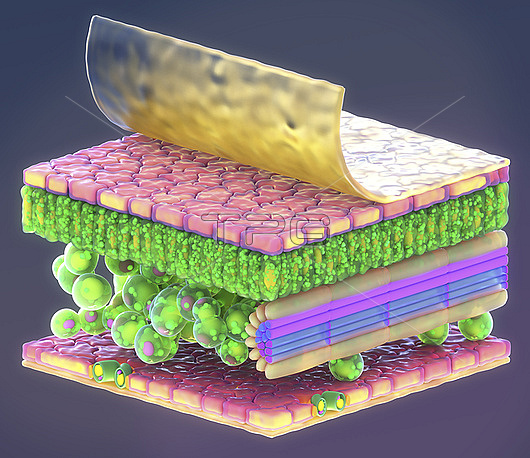
Plant leaf structure, illustration. Cross-section of a typical plant leaf. In most plants, leaves are the major site of photosynthesis. Chloroplasts within leaves' cells use chlorophyll to convert the energy in sunlight into chemical energy which the plant uses as food in the form of glucose. Each leaf is made of many layers sandwiched between two layers of epidermal cells (pink), which also secrete a waxy substance that forms the cuticle (yellow). These layers protect the leaf from pests. Within the epidermal cells are pairs of guard cells (green cells within pink layer), which form a pore (stomata), the site of gas exchange. Most food production takes place in the palisade mesophyll (green, upper layer). Gas exchange occurs in the air spaces between the cells of the spongy mesophyll (green, bottom layer). The vascular bundles (lower right) consist of the xylem and phloem, which facilitate plant transport of water and nutrients respectively.
| px | px | dpi | = | cm | x | cm | = | MB |
Details
Creative#:
TPG32640949
Source:
達志影像
Authorization Type:
RF
Release Information:
須由TPG 完整授權
Model Release:
N/A
Property Release:
N/A
Right to Privacy:
No
Same folder images:

 Loading
Loading